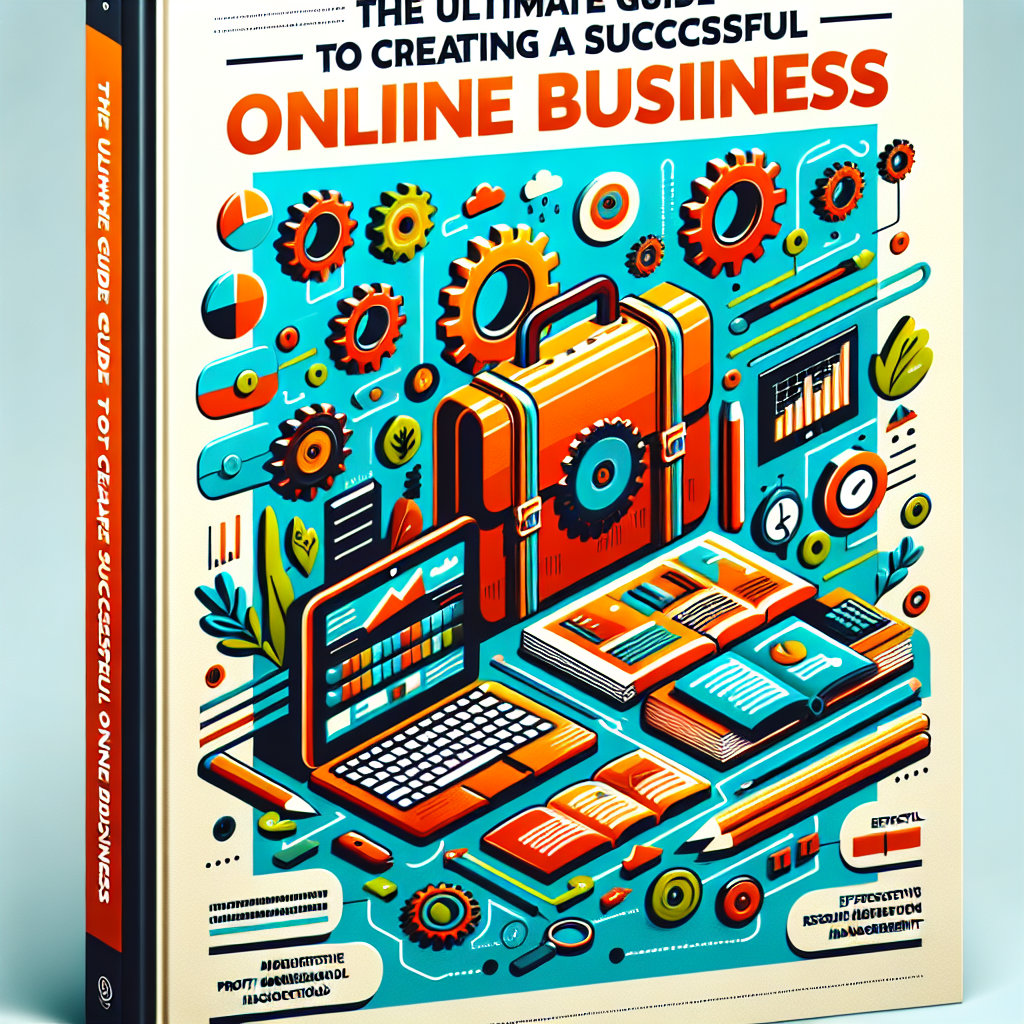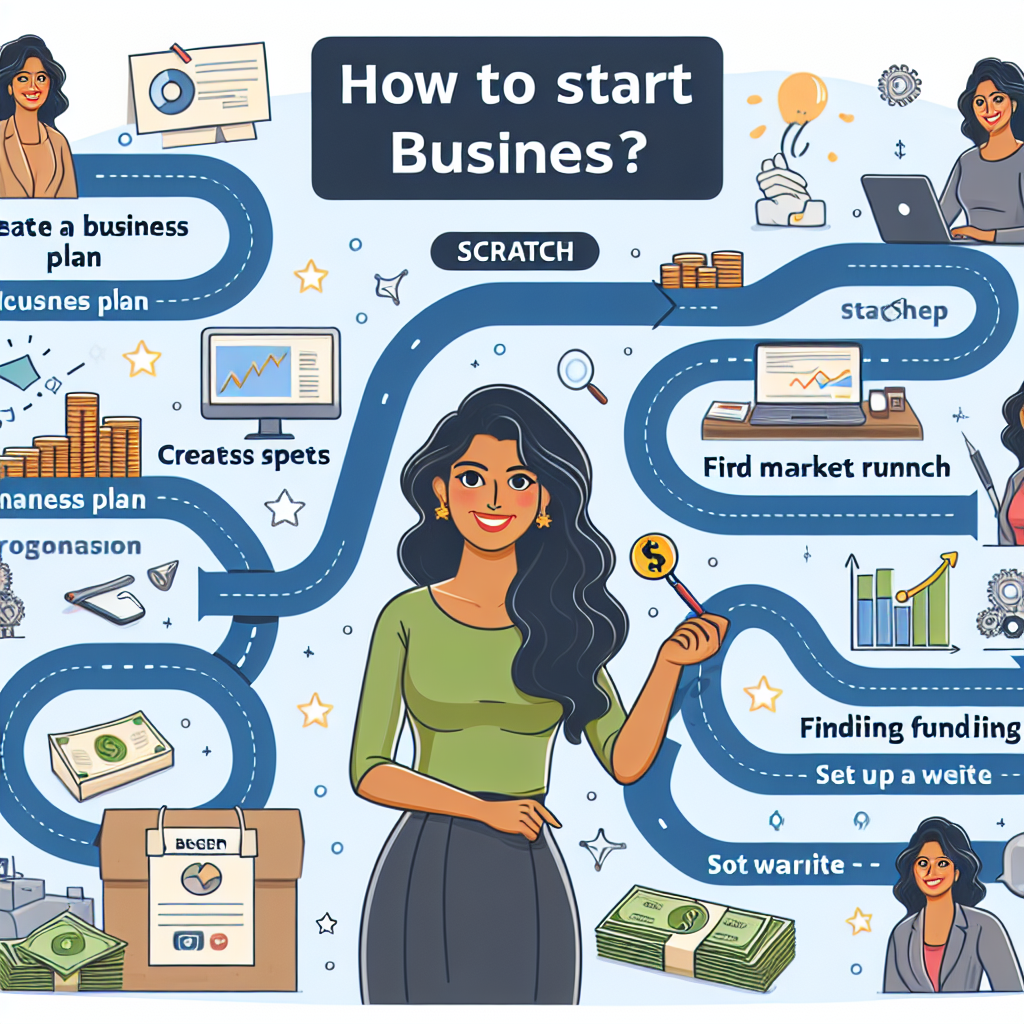How to Launch a Successful Product: From Idea to Market
Identifying Market Needs And Validating Your Product Idea
Identifying market needs and validating your product idea are crucial steps in launching a successful product. The journey from a mere concept to a market-ready product involves understanding the demands of your target audience and ensuring that your idea resonates with them. To begin with, it is essential to conduct thorough market research. This involves gathering data on current market trends, consumer behavior, and potential competitors. By analyzing this information, you can identify gaps in the market that your product could fill.
Engaging with your target audience is another vital aspect of this process. Surveys, focus groups, and interviews are effective methods to gather insights directly from potential customers. These interactions can reveal their pain points, preferences, and expectations, providing you with a clearer picture of what they truly need. Additionally, social media platforms and online forums can be valuable resources for understanding consumer sentiment and identifying emerging trends.
Once you have a solid understanding of the market needs, the next step is to validate your product idea. This involves testing your concept to ensure it has the potential to succeed. One effective way to do this is by creating a minimum viable product (MVP). An MVP is a simplified version of your product that includes only the essential features. By launching an MVP, you can gather feedback from early adopters and make necessary adjustments before investing significant resources into full-scale production.
Crowdfunding platforms can also be an excellent way to validate your product idea. By presenting your concept to a broader audience, you can gauge interest and secure funding simultaneously. A successful crowdfunding campaign not only provides financial support but also serves as a strong indicator of market demand.
Another important aspect of validation is competitive analysis. By studying your competitors, you can identify their strengths and weaknesses, and determine how your product can offer a unique value proposition. This analysis can also help you understand the pricing strategies and marketing tactics that work well in your industry.
In addition to these methods, it is crucial to seek feedback from industry experts and mentors. Their experience and insights can provide valuable guidance and help you avoid common pitfalls. Networking events, industry conferences, and online communities are excellent places to connect with such individuals.
As you gather feedback and refine your product idea, it is important to remain flexible and open to change. The initial concept may evolve significantly based on the insights you receive. Embracing this iterative process ensures that your final product is well-aligned with market needs and has a higher chance of success.
Finally, it is essential to develop a robust business plan that outlines your product’s value proposition, target market, marketing strategy, and financial projections. This plan will serve as a roadmap, guiding you through the various stages of product development and launch.
In conclusion, identifying market needs and validating your product idea are foundational steps in launching a successful product. By conducting thorough market research, engaging with your target audience, creating an MVP, leveraging crowdfunding, analyzing competitors, seeking expert feedback, and developing a solid business plan, you can ensure that your product is well-positioned to meet market demands and achieve success. This comprehensive approach not only minimizes risks but also maximizes the potential for your product to thrive in the competitive marketplace.
Crafting A Comprehensive Business Plan And Strategy
Crafting a comprehensive business plan and strategy is a crucial step in launching a successful product. It serves as the blueprint for your venture, guiding you from the initial idea to market entry and beyond. To begin with, it’s essential to clearly define your product and its unique value proposition. This involves understanding what makes your product stand out from the competition and why customers would choose it over others. By articulating this clearly, you set a strong foundation for your business plan.
Next, conducting thorough market research is indispensable. This research should encompass an analysis of your target market, including demographics, preferences, and purchasing behaviors. Additionally, studying your competitors will provide insights into their strengths and weaknesses, helping you identify opportunities and threats in the market. With this information, you can better position your product to meet the needs and desires of your potential customers.
Once you have a solid understanding of the market, it’s time to outline your marketing and sales strategies. This includes determining the most effective channels to reach your audience, whether through social media, email marketing, or traditional advertising. It’s also important to develop a pricing strategy that reflects the value of your product while remaining competitive. By planning these aspects in advance, you can ensure a cohesive approach to attracting and retaining customers.
Financial planning is another critical component of your business plan. This involves projecting your revenue, expenses, and profitability over a specific period. Creating detailed financial forecasts will help you understand the financial viability of your product and identify any potential funding needs. Whether you plan to seek investment or bootstrap your venture, having a clear financial plan will instill confidence in stakeholders and guide your financial decisions.
In addition to financial planning, operational planning is essential for the smooth execution of your product launch. This includes outlining the production process, supply chain management, and logistics. Ensuring that you have reliable suppliers and efficient processes in place will help you meet demand and maintain quality standards. Moreover, considering potential risks and developing contingency plans will prepare you to handle any unforeseen challenges that may arise.
As you move forward, it’s important to establish key performance indicators (KPIs) to measure the success of your product launch. These metrics will help you track progress, identify areas for improvement, and make data-driven decisions. Regularly reviewing and adjusting your strategies based on these insights will enable you to stay agile and responsive to market changes.
Furthermore, building a strong team is vital to the success of your product launch. Surrounding yourself with individuals who possess complementary skills and share your vision will enhance your ability to execute your business plan effectively. Encouraging open communication and fostering a collaborative environment will also contribute to a more innovative and resilient team.
Finally, maintaining a customer-centric approach throughout the entire process is key. Continuously seeking feedback from your customers and making improvements based on their input will help you build a loyal customer base. By prioritizing customer satisfaction and delivering exceptional value, you can create a positive reputation and drive long-term success for your product.
In conclusion, crafting a comprehensive business plan and strategy involves a series of interconnected steps, each contributing to the overall success of your product launch. By clearly defining your product, conducting thorough market research, outlining marketing and sales strategies, planning financially and operationally, establishing KPIs, building a strong team, and maintaining a customer-centric approach, you can navigate the journey from idea to market with confidence and achieve your business goals.
Developing A Minimum Viable Product (MVP) For Initial Feedback
Developing a Minimum Viable Product (MVP) for initial feedback is a crucial step in the journey from idea to market. It serves as the foundation upon which your product will be built, allowing you to test your concept with real users and gather valuable insights before investing significant time and resources. To begin with, it’s essential to understand what an MVP is. Essentially, an MVP is a simplified version of your product that includes only the core features necessary to solve the primary problem for your target audience. This approach helps you validate your idea with minimal effort and cost, ensuring that you are on the right track before scaling up.
The first step in developing an MVP is to clearly define the problem you aim to solve. This involves conducting thorough market research to identify the pain points of your potential customers. By understanding their needs and preferences, you can prioritize the features that will deliver the most value. Once you have a clear problem statement, the next step is to outline the key functionalities of your MVP. It’s important to focus on the essentials and avoid the temptation to include every possible feature. Remember, the goal is to create a product that is functional enough to test your hypothesis but simple enough to develop quickly.
After defining the core features, it’s time to create a prototype. This can be a low-fidelity version of your product, such as wireframes or mockups, which will help you visualize the user experience and identify any potential issues early on. Prototyping also allows you to gather initial feedback from stakeholders and make necessary adjustments before moving on to development. With a refined prototype in hand, you can proceed to build the MVP. Depending on your technical expertise and resources, you may choose to develop the product in-house or outsource the work to a development team. Whichever route you take, it’s crucial to maintain clear communication and ensure that everyone involved understands the project’s objectives and timelines.
Once the MVP is developed, the next step is to test it with a small group of users. This initial feedback phase is critical, as it provides you with insights into how your target audience interacts with the product and whether it effectively addresses their needs. To gather meaningful feedback, consider using surveys, interviews, or usability testing sessions. Pay close attention to any recurring issues or suggestions for improvement, as these will guide your next steps. Based on the feedback received, you may need to iterate on your MVP, making necessary adjustments to enhance its functionality and user experience. This iterative process is essential for refining your product and ensuring that it meets the expectations of your target audience.
Throughout this journey, it’s important to maintain a flexible mindset and be open to change. The insights gained from testing your MVP will not only help you improve the product but also provide valuable lessons for future development. By embracing feedback and continuously iterating, you can increase the likelihood of launching a successful product that resonates with your market. In conclusion, developing a Minimum Viable Product for initial feedback is a strategic approach that allows you to validate your idea, gather valuable insights, and make informed decisions before fully committing to the market. By focusing on the core features, prototyping, testing, and iterating, you can create a solid foundation for your product and set the stage for a successful launch.
Creating An Effective Marketing And Launch Plan
Creating an effective marketing and launch plan is crucial for the success of any new product. It begins with understanding your target audience. Knowing who your potential customers are, what they need, and how your product can solve their problems is the foundation of any successful marketing strategy. Conducting thorough market research will provide valuable insights into consumer behavior, preferences, and trends. This information will help you tailor your marketing messages to resonate with your audience, making your product more appealing.
Once you have a clear understanding of your target market, the next step is to develop a compelling value proposition. This is a concise statement that explains why your product is unique and why customers should choose it over competitors. Your value proposition should highlight the key benefits and features of your product, addressing the specific needs and pain points of your target audience. A strong value proposition will serve as the cornerstone of your marketing efforts, guiding the development of your messaging and positioning.
With your value proposition in place, it’s time to create a comprehensive marketing plan. This plan should outline the various tactics and channels you will use to reach your target audience. Consider a mix of online and offline strategies to maximize your reach. Digital marketing channels such as social media, email marketing, and search engine optimization (SEO) are essential for building awareness and driving traffic to your website. Social media platforms, in particular, offer powerful tools for engaging with your audience, sharing content, and generating buzz around your product.
In addition to digital marketing, don’t overlook traditional marketing methods. Public relations (PR) efforts, such as press releases and media outreach, can help you gain valuable coverage in industry publications and news outlets. Attending trade shows, conferences, and networking events can also provide opportunities to showcase your product and connect with potential customers and partners.
As you execute your marketing plan, it’s important to create a sense of anticipation and excitement leading up to your product launch. Teaser campaigns, countdowns, and sneak peeks can generate interest and build momentum. Consider offering exclusive pre-launch access or special promotions to early adopters to create a sense of urgency and reward loyal customers.
On the day of the launch, ensure that all your marketing channels are aligned and working together seamlessly. Your website should be optimized for conversions, with clear calls-to-action and easy navigation. Social media posts, email campaigns, and PR efforts should all be coordinated to create a cohesive and impactful launch.
After the initial launch, it’s crucial to maintain the momentum and continue engaging with your audience. Monitor the performance of your marketing efforts and gather feedback from customers to identify areas for improvement. Use this information to refine your strategies and make data-driven decisions. Regularly updating your marketing content and staying active on social media will help keep your product top-of-mind and attract new customers.
In conclusion, creating an effective marketing and launch plan involves a combination of thorough market research, a compelling value proposition, a comprehensive marketing strategy, and ongoing engagement with your audience. By following these steps and staying adaptable, you can successfully bring your product to market and achieve long-term success.
Building A Strong Post-Launch Support And Feedback System
Launching a product is an exhilarating journey, but the work doesn’t stop once your product hits the market. Building a strong post-launch support and feedback system is crucial for ensuring long-term success and customer satisfaction. This phase is where you solidify your relationship with your customers, gather valuable insights, and make necessary improvements. To begin with, establishing a dedicated customer support team is essential. This team should be well-trained, empathetic, and knowledgeable about the product. They are the frontline soldiers who will handle inquiries, troubleshoot issues, and provide guidance. A responsive and efficient support system can turn a frustrated customer into a loyal advocate.
In addition to a robust support team, creating multiple channels for customer feedback is vital. Encourage customers to share their experiences through surveys, social media, and direct communication. This feedback is a goldmine of information that can help you understand what is working well and what needs improvement. Moreover, actively listening to your customers and acknowledging their input fosters a sense of community and trust. Transitioning from gathering feedback to implementing changes is the next critical step. Analyze the feedback to identify common themes and prioritize the most impactful improvements. This iterative process of refining your product based on real-world usage ensures that it continues to meet customer needs and expectations.
Furthermore, maintaining open lines of communication with your customers is key. Regularly update them on the progress of any changes or new features based on their feedback. This transparency not only keeps customers informed but also demonstrates that you value their input and are committed to continuous improvement. Another important aspect of post-launch support is monitoring the product’s performance. Utilize analytics tools to track usage patterns, identify potential issues, and measure customer satisfaction. These insights can help you make data-driven decisions and proactively address any problems before they escalate.
Additionally, fostering a community around your product can enhance customer engagement and support. Create forums, social media groups, or user communities where customers can share tips, ask questions, and connect with each other. This peer-to-peer support network can alleviate some of the pressure on your customer support team and create a sense of belonging among users. As you build your post-launch support system, don’t forget to recognize and reward loyal customers. Implementing a loyalty program or offering exclusive perks can incentivize repeat business and strengthen customer relationships. Happy customers are more likely to become brand ambassadors, spreading positive word-of-mouth and attracting new users.
Lastly, it’s important to stay agile and adaptable. The market landscape and customer preferences can change rapidly, so being able to pivot and respond to new challenges is crucial. Regularly review and update your support and feedback strategies to ensure they remain effective and relevant. In conclusion, building a strong post-launch support and feedback system is a multifaceted endeavor that requires dedication, empathy, and continuous effort. By prioritizing customer satisfaction, actively seeking feedback, and fostering a sense of community, you can create a loyal customer base and drive the long-term success of your product. Remember, the journey doesn’t end at launch; it’s just the beginning of an ongoing relationship with your customers.




















